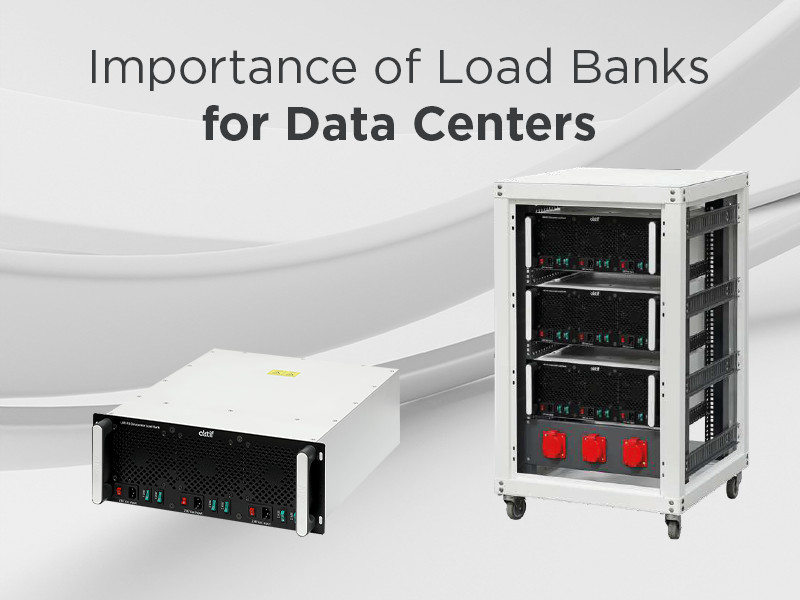
Importance of Load Banks for Data Centers
In the rapidly evolving digital landscape, data centers have emerged as the backbone of our information-driven world. These hubs of computing power and storage are tasked with keeping the digital ecosystem running seamlessly, even in the face of unpredictable power disruptions. There is a very important equipment for testing the products used in performing this task.- the load bank. Load banks have become indispensable tools in the data center industry, serving as guardians of reliability and efficiency.
The insatiable appetite for digital services has driven a meteoric rise in the power consumption of data centers. Streaming high-definition content, the proliferation of social media, and the emergence of cutting-edge technologies like blockchain and 5G have all contributed to this surge.
In an era where digital services are expected to be available 24/7, data centers cannot afford any downtime. The consequences of power failures can be catastrophic, both in terms of financial losses and reputational damage.
In the United States alone, the average cost of a single minute of data center downtime is estimated at a staggering $7,900. This underscores the vital importance of maintaining a reliable and resilient power infrastructure within these mission-critical facilities.
See Products: Load Banks
The Role of Load Banks in Data Center
Load banks are the unsung heroes in the data center power ecosystem. These specialized devices are designed to simulate real-world electrical loads, allowing data center operators to thoroughly test and validate the performance of their power systems. By subjecting critical components like backup generators, UPS systems, and HVAC units to controlled load conditions, load banks provide invaluable insights into their operational readiness and efficiency. In this way, we prove and ensure that we can fulfill our uninterrupted power.
Commissioning
During the commissioning phase of a data center, load banks play a pivotal role in identifying and addressing any underlying electrical issues before the facility goes live. With real-life load not always available in the initial stages of construction, load banks offer the only practical way to simulate actual power demands. This allows data center operators to thoroughly test and validate the performance of essential components, including backup diesel generators, UPS systems, HVAC systems, bus tracks, power distribution units, and server racks.
Maintenance
Maintaining the reliability of data center power systems is a constant challenge. Regular maintenance and periodic testing are essential to ensure that backup systems, such as UPS and diesel generators, are ready to step in when the grid fails. Load banks are the most effective tools for this task, enabling data center operators to stress-test their electrical systems and identify any potential issues before they escalate into costly downtime.
Expansion
As data centers are often built with expansion in mind, load banks play a critical role in ensuring that new components and hardware can seamlessly integrate with the existing infrastructure. By simulating real-life power conditions, load banks allow data center operators to verify the operation and efficiency of new equipment, especially in sensitive or mission-critical locations where uninterrupted service is paramount.
Component Replacement
Over time, the electrical components within a data center begin to degrade, increasing the risk of failures. Load banks provide an effective means of testing and verifying the condition of these aging parts, allowing data center operators to replace components proactively before they cause disruptions.
Optimizing Data Center Design and Efficiency
Load bank testing is not just about ensuring reliability; it also plays a vital role in optimizing the design and efficiency of data centers. By analyzing the results of load bank tests, data center operators can make informed decisions about HVAC system configuration, server rack placement, and other critical infrastructure elements, ultimately enhancing the overall energy efficiency of the facility.
Aktif Elektroteknik 19″ Rack Mounted Load Banks
A typical data center comprises power transformers, generators, UPS systems, and server rack cabinets. Generators and UPS systems can be tested using our high-power fixed or mobile load banks, as these tests primarily focus on power performance and do not require heat simulation. However, to accurately simulate the power consumption and heat output of server devices within a server room, we utilize Rack-Mounted Data Center Load Banks that are mechanically and electrically compatible with the rack cabinets. This allows for precise testing of the data center’s cooling system capacity.
See Products: 19″ Rack Mounted Load Banks
Aktif Elektroteknik’s LBR 19’’ Rack-Mounted Data Center Load Banks are specifically designed to simulate the heat increase generated by servers in data halls and to mimic the temperature rise during cooling system failures. These load bank solutions effectively replicate real-world conditions, enabling thorough performance testing of the data center’s infrastructure.
In the dynamic and mission-critical world of data centers, load banks have emerged as indispensable tools for maintaining reliable, efficient, and future-proof power infrastructure. By enabling comprehensive testing, validation, and optimization of critical electrical systems, load banks play a pivotal role in safeguarding the uninterrupted operation of these vital digital hubs. As data centers continue to evolve and their power demands escalate, the importance of load bank technology will only grow, ensuring that these essential facilities remain the backbone of our connected world. For all your load bank needs, please fill out the form below. Our team at Aktif Elektroteknik is committed to providing high-quality load bank solutions tailored to your specific requirements.


